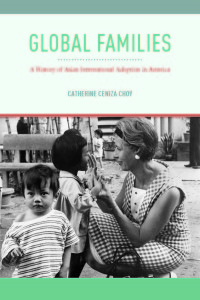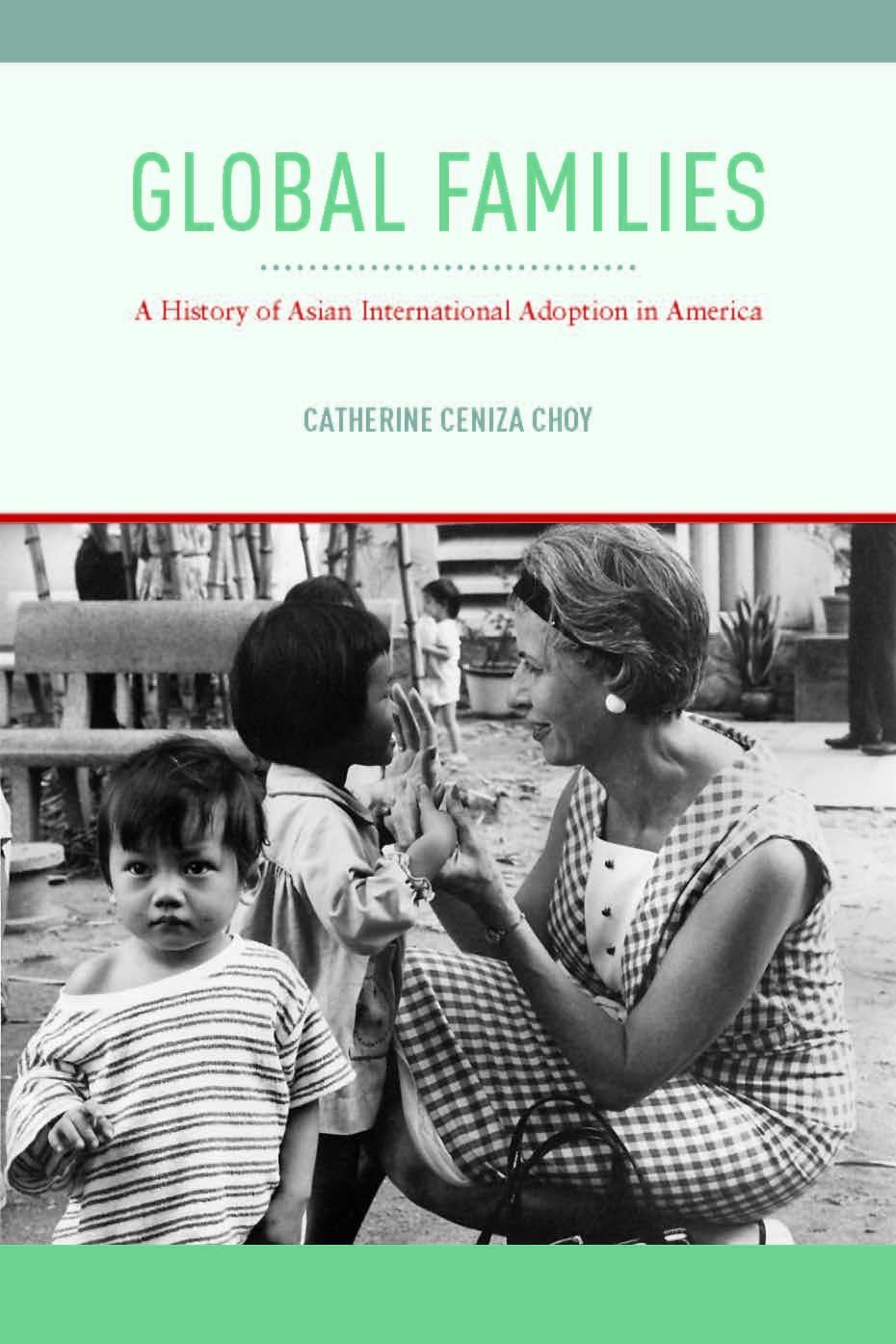Social media’s recent co-option of the term “transracial” to describe former NAACP chapter President Rachel Dolezal’s controversial identification as black has garnered a maelstrom of criticism from adoption community members for good reason. It erases the decades-long history of Asian international and transracial adoption in the United States. The United States is the top recipient of adoptive children from throughout the world. In the late-twentieth and early twenty-first centuries, American families have adopted children from Latin American, European, and African nations. However, beginning in the 1950s, predominantly white American parents’ adoption of Asian children played a formative role in making adoption global and transracial.
In the aftermath of World War II and at the onset of the Cold War, Americans’ adoption of mixed-race Japanese, Korean, and Vietnamese children born of U.S. servicemen and Asian women captured the hearts and minds of the general public. The distinctive racial features of these mixed Asian and American children had made them visible targets for abuse. The lack of U.S. and Asian governmental support, and desertion by their American fathers, influenced their mothers’ decisions to abandon them, creating a group of children available for adoption. International adoption from China is popularly conceived as a more recent phenomenon. Yet, an earlier period of Chinese international adoption took place under the auspices of “the Hong Kong Project” through which Chinese American and white American families adopted hundreds of Chinese boys and girls, who had been relinquished by refugee families fleeing communist mainland China.
The history of Asian international adoption in the United States provides a lens to view the relationship between U.S. foreign relations and immigration, specifically between an American military presence in other countries and the resultant migrations of children to the United States. It also helps us glean the shifting definitions of what constitutes an American family. Confronting this history is not easy. It compels us to grapple with the brutal aftermath of war, the absence of social services to vulnerable populations, U.S. as well as Asian racisms, the adoption of children who were not true orphans, but whose relatives relinquished them because of poverty and hopelessness, American adoptive parents’ tense encounters with family members and neighbors who opposed their decision to adopt internationally and transracially, and Asian adoptees’ painful loss of their birth families and homelands. Yet, these earlier experiences also contributed to progressive social changes—such as the increasing acceptance of multiracial peoples and multicultural heritages–that enabled Asian international adoption in the United States to grow exponentially.
Between 1971 and 2001, U.S. citizens adopted 265,677 children from other countries. Over half of those children were from Asian countries. In the twenty-first century, China, South Korea, Vietnam, India, Cambodia, and the Philippines are among the top twenty sending countries of adoptive children. Beginning around 2005, the total numbers of international adoptions in the United States started to decline. However, current demographic trends cannot undo the impact of Asian international adoption in the United States. International adoption continues to shape the American experience through the presence of multiple generations of Asian adult adoptees as well as Asian adoptive children in our schools, workplaces, and neighborhoods.
 At the Fall 2014 UC Berkeley Mixed Student Union conference, I had the pleasure of giving a presentation about my book Global Families: A History of Asian International Adoption. Afterwards, two young people—a college student and a recent college graduate—approached me to ask for further resources about international adoption. The college student was a Chinese adoptee who was just beginning to explore her adoptive identity. The recent graduate was not an adoptee, but he had become interested in Asian international adoption because his mother is a Korean adoptee. She was uninterested in exploring her Korean heritage and trying to reunite with her Korean birth family, he explained. But he was. Listening to their stories powerfully reminded me that the United States is an international adoption nation.
At the Fall 2014 UC Berkeley Mixed Student Union conference, I had the pleasure of giving a presentation about my book Global Families: A History of Asian International Adoption. Afterwards, two young people—a college student and a recent college graduate—approached me to ask for further resources about international adoption. The college student was a Chinese adoptee who was just beginning to explore her adoptive identity. The recent graduate was not an adoptee, but he had become interested in Asian international adoption because his mother is a Korean adoptee. She was uninterested in exploring her Korean heritage and trying to reunite with her Korean birth family, he explained. But he was. Listening to their stories powerfully reminded me that the United States is an international adoption nation.
Thus, the history of Asian international adoption in the United States and its legacies are important for all of us–and not solely those who are directly involved in adoption as parents, practitioners, and adoptees themselves—to know. Educators and librarians play an important role by responding to questions, such as the ones posed to me at the student conference, with awareness, sensitivity, and insight. We can and should advocate for making a diverse array of resources on international and transracial adoption available and accessible to our local communities and the general public. APALA’s May 16th blog post on a resource guide to this topic by Sofia Leung and its upcoming President’s Program, “Global Roots, Local Identities: Asian International Adoption and Advocacy,” on June 27 provide a wonderful place to begin.
Global Roots, Local Identities: Asian International Adoption and Advocacy
Co-sponsored by Video Round Table
Saturday, June 27, 2015, 4:30-5:30 PM
Moscone Convention Center, 236-238 (S)
Description: APALA President’s Program will feature a dynamic discussion between Dr. Catherine Ceniza Choy, a professor of Ethnic Studies at UC-Berkeley and Maria Taesil Hudson Carpenter, the City Librarian of the Santa Monica Public Library System. They will examine the issues raised by Geographies of Kinship: International Asian Adoption, a new film by award-winning Berkeley-based filmmaker Deann Borshay Liem, in the larger context of international adoption and reflect on universal questions of identity, assimilation, family, community, and advocacy. Excerpts from the film and a personal introduction especially produced for this program by Deann will be shown. The APALA President’s Program is co-sponsored by APALA and VRT.
We hope to see everyone there!

